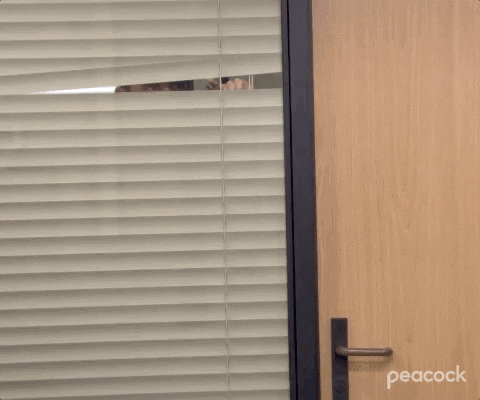People often joke on X about the lame DMs they get:
Hi!
Well, it’s not just X.
Every (remote) organization, engineer, and team lead is confronted with these messages daily.
”Hi.”
The oneliner that SEGFAULTS your entire brain because so many things could come after it.
Would you like to pair? Did I forget a review? Are you taking some days off? Would you like to invite me to your birthday party?
And it has many other forms.
Hi, can you help me?
Hey, are you there?
But these little additions don’t add context to your question.
Before we continue, a quick word from our first sponsor: me!
I just released my first book on the Amazon KDP store: OpenAI Crash Course in One Hour: Build Production-Ready Generative AI Apps with React, TypeScript & Remix.
The promotion lasts until 11:59 PM PDT. Quick, grab a free copy! – if you missed it and can’t afford it, reply to this email, and we’ll figure something out. 😉
⭐ In this post, you’ll learn
How to make one little step to turn such messages into learning opportunities that could build your credibility as an engineer.
🌳 Why do we do this?
I’ve worked remotely for almost a decade across several time zones and got used to async communication.
But it wasn’t always like that.
At my first job in 2012, we didn’t have Slack, Teams, Discord, or any of that. Most of our communication was happening live, rarely in emails (if you got an email, that was serious trouble).
We were sitting in a little office, sometimes wearing our jackets during the winter because the heating was poor.
When you wanted to start a discussion, you would say, Hey–yep, just like that message I’m talking about. And then you would either get an answer or not, but usually, you got one.
You also got the person's eye-roll if you interrupted them during some deep thinking.
So, usually, you didn’t kick off with a Hi but with a clever reconnaissance look.
You had to judge by facial expression whether they were thinking launch or were near to figuring out that year-old bug.
If it was the former, then you made your shot.
This took a lot of time.
Not to add the stress and all the thinking that went into deciding, is it the right time to ask my question?
Did I spend enough time with the problem on my own?
What if they’re working on something much, much more important?
So I waited and waited, worked on other stuff, and looked for the right moment.
Two years ago, I worked with some developers who attended live courses and graduated from coding schools. Some schools claimed they worked on real projects and put the developers into real circumstances. I bet you.
Hi!
Came the message not so long into the first day from a fresh developer.
🧑🎓 Based on a true story
Peter, the person looking at your Hi just received another Hi in a different chat.
So what does Peter do?
Let’s go with first-come-first-serve:
The first person sending Hi blocks Peter. He’s a nice guy responding with:
What’s up?
A discussion about how much money we’re chipping in for John’s 10th anniversary unfolds.
Unfortunately, what followed the second Hi! was a production issue that happened while Peter’s brain was occupied with the color of the balloons.
Whoops!
Could we have done anything better to prioritize the production issue?
I’m trying to think of a list here, but it’s really just one thing: providing context.
Both senders, providing context for Peter alongside the nice Hi, would have made Peter’s choice rather trivial. Balloons or TypeError: "runPayroll" is not a function.
But there are several benefits of providing context alongside a harmless Hi!
Better Understanding of the Problem
A problem in your mind is one thing, but formulating it as a coherent message that reveals critical information to the reader so they understand what’s going on and where they could help is another.
This is exactly how Sir Andrew John Wiles found a solution to a 300-year-old mathematical problem.
Understanding the problem is half of the solution.
I’m sure it happened to you as well.
While typing that email or Slack message where, you meticulously laid out all the necessary details and, in the end, asked the question, but you already had the answer.
Even if the thinking process happens in our mind, because we write with a person in mind who doesn’t have access to our mind, we tend to formulate (or at least we should strive to do so) clearly and as precisely as possible.
Sometimes, this is enough to take a step in the right direction, but sometimes, it equals the solution.
And who doesn’t love thinking, self-sufficient engineers who communicate clearly?
Here, take your promotion 🥇
What’s your take on this?
How do you deal with interruptions during work, such as the Hi messages?
📰 Weekly shoutout
Most micromanagers are blind to being seen as one - Guilty ✋ What stopped me from constantly looking after my employees was the increased amount of tasks I had. But guess what happened: nothing. They keep delivering. Great stuff from
23 System Design Interview Tips – This is a great refresher on the problems we face in the lifetime of many software systems we build.
’s post organized these problems into a list of interview questions. Worth checking out!How I setup my terminal for max productivity - Some hands-on stuff from
. The terminal is part of our lives. And it’s not marketing when I say you can not only make it look cool but also make it more effective.
📣 Share
There’s no easier way to help this newsletter grow than by sharing it with the world. If you liked it, found something helpful, or you know someone who knows someone to whom this could be helpful, share it:
🏆 Subscribe
Actually, there’s one easier thing you can do to grow and help grow: subscribe to this newsletter. I’ll keep putting in the work and distilling what I learn/learned as a software engineer/consultant. Simply sign up here:





This was a widely researched topic at Google, internally we used to have a header go/nohello and it covers exactly this.
Great post, Akos. A simple "hi" might seem harmless and nice, but it actually not only hurts your productivity but the other person as well. Because it demands multiple context switches and leaves the other person hanging till you come up with the real question.
Great article Akos. It's a very real problem you've mentioned.
"Hi" is used to do a lot of heavy lifting in such scenarios. Another similar thing is "Do you have 2 minutes?"
The trouble I think is that people are often just looking to get you into a conversation before revealing what they need. They aren't sure whether you are interested in the topic but still need your time. It's definitely not a good strategy and results in so many confusions as you mentioned about the balloons vs production issue example.
Also, thanks for the mention!